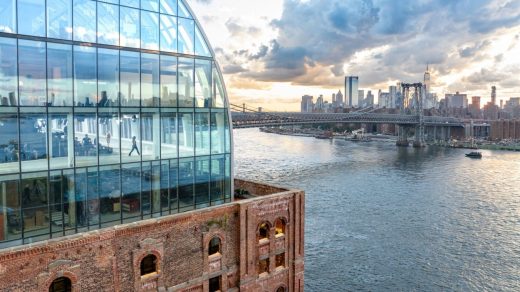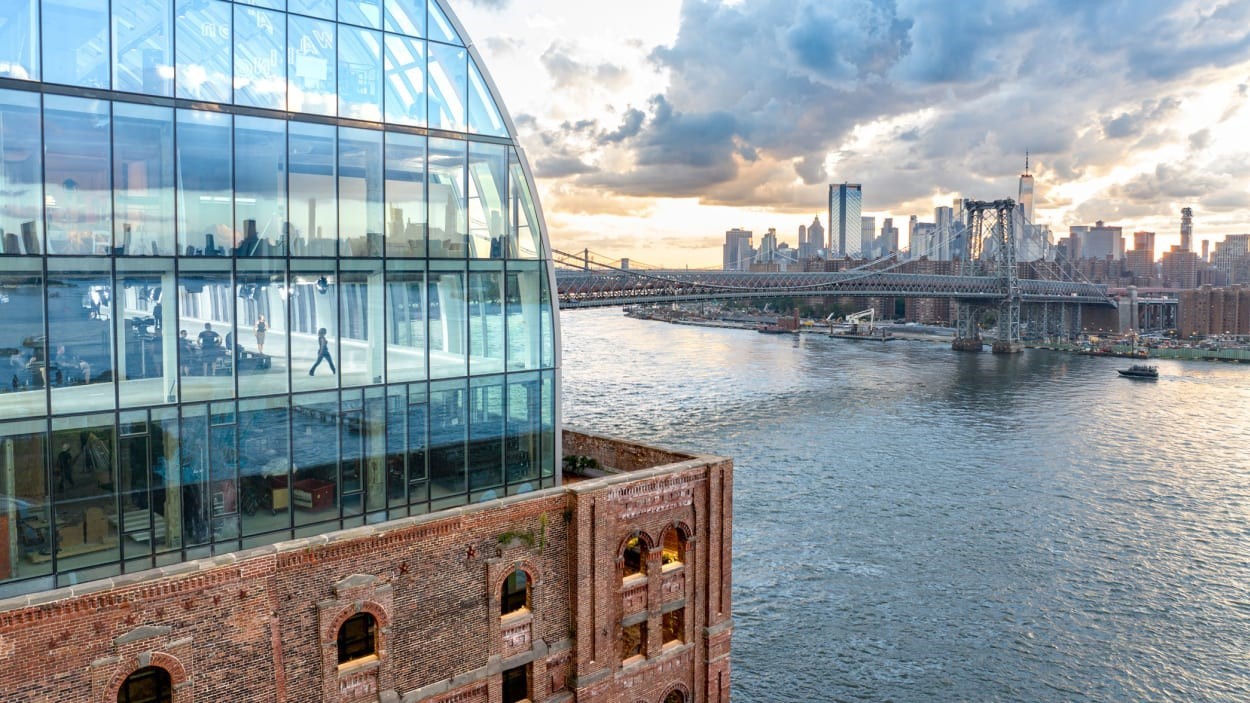Inside the new Domino Sugar Refinery’s $2.5 billion renovation
At long last, the Domino Sugar Refinery in Williamsburg, Brooklyn is complete. Almost two decades after it shut down, the refinery building that once produced more than a million pounds of sugar a day has been transformed into a Class A office space.
The project was led by Two Trees Management—the same development firm that, for better or worse, also transformed Brooklyn’s Dumbo neighborhood. It consists of a new building within an old building. The 1884 brick facade and its constellation of arched windows was landmarked in 2007, and therefore remains virtually untouched. The inside, however, is completely unrecognizable.
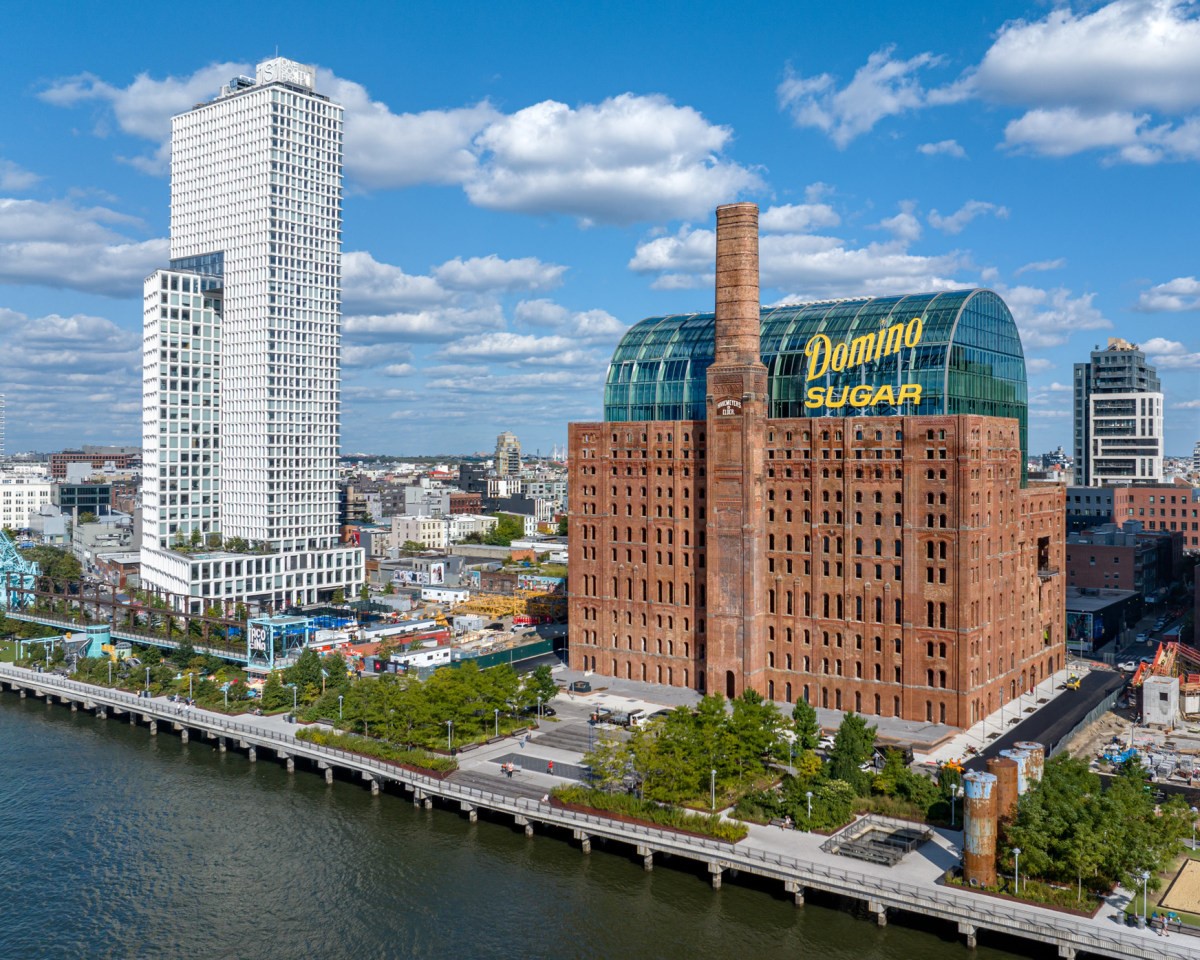
Just a few years ago, the refinery was filled with stainless steel syrup tanks and 80-foot-tall gantry cranes emblematic of the Industrial Revolution. Now, it is a light-filled office building with a triple height atrium lobby, floor plates as large as a Manhattan office building, bike parking, an indoor pool, and a spectacular glass vault on top.
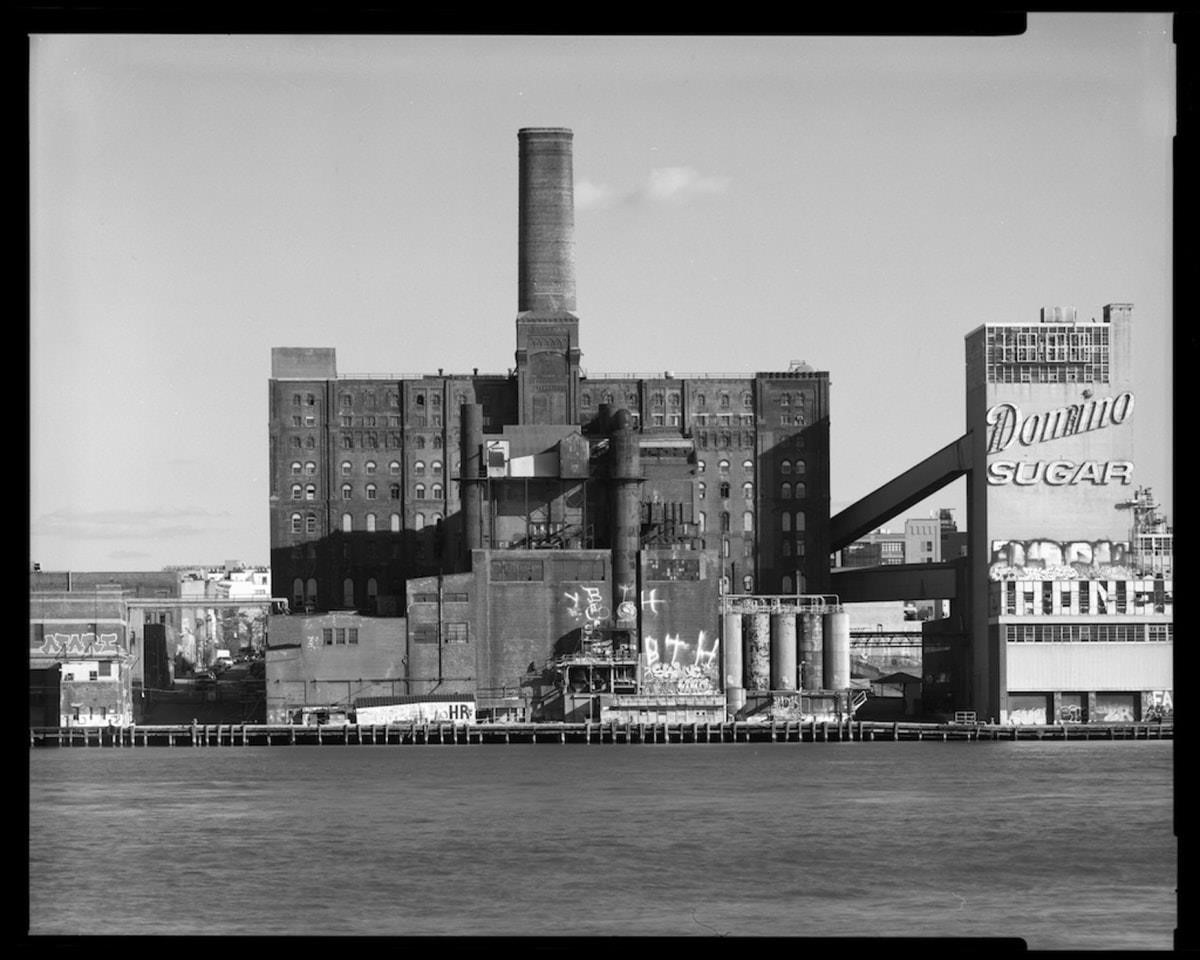
Many of the relics that once filled the space have found a second life as decorative elements and benches inside nearby Domino Park, which opened in 2018 to a design by Field Operations. But getting them out of the landmarked facade was no easy task. According to Two Trees Management principal Bonnie Campbell, who showed me around on a hard hat tour in August, it took a small team a few years to slice all the machinery into manageable pieces, and squeeze them all out through the facade’s various apertures on the ground floor. The demolition work cost about a third of the total cost of the project, namely $825 million out of a dizzying $2.5 billion.
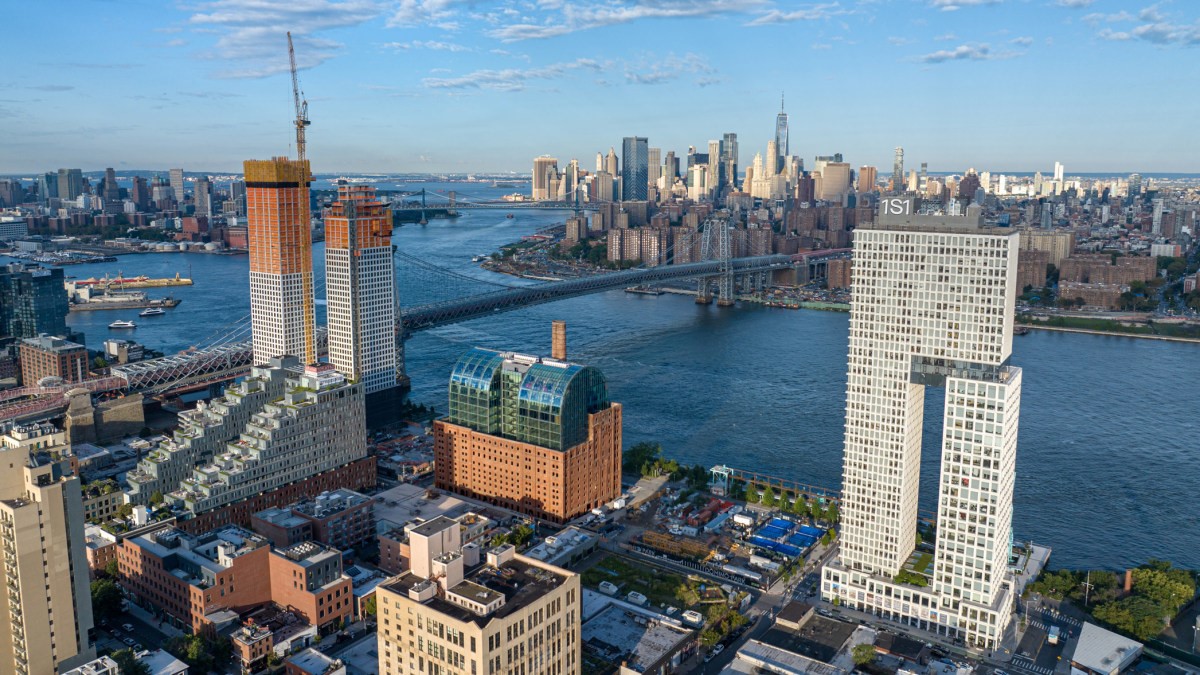
Before Two Trees started dismantling the interiors, they let a few photographers inside to capture the maze of rusted pipes and crumbling walls. Having seen those photographs, I struggle to wrap my head around the sheer transformation of the building, but it’s helpful to remember that this was never really a building. It was “a shell for commercial activity,” says Vishaan Chakrabarti, the founder and creative director of local architecture studio PAU, which led the design of the project.
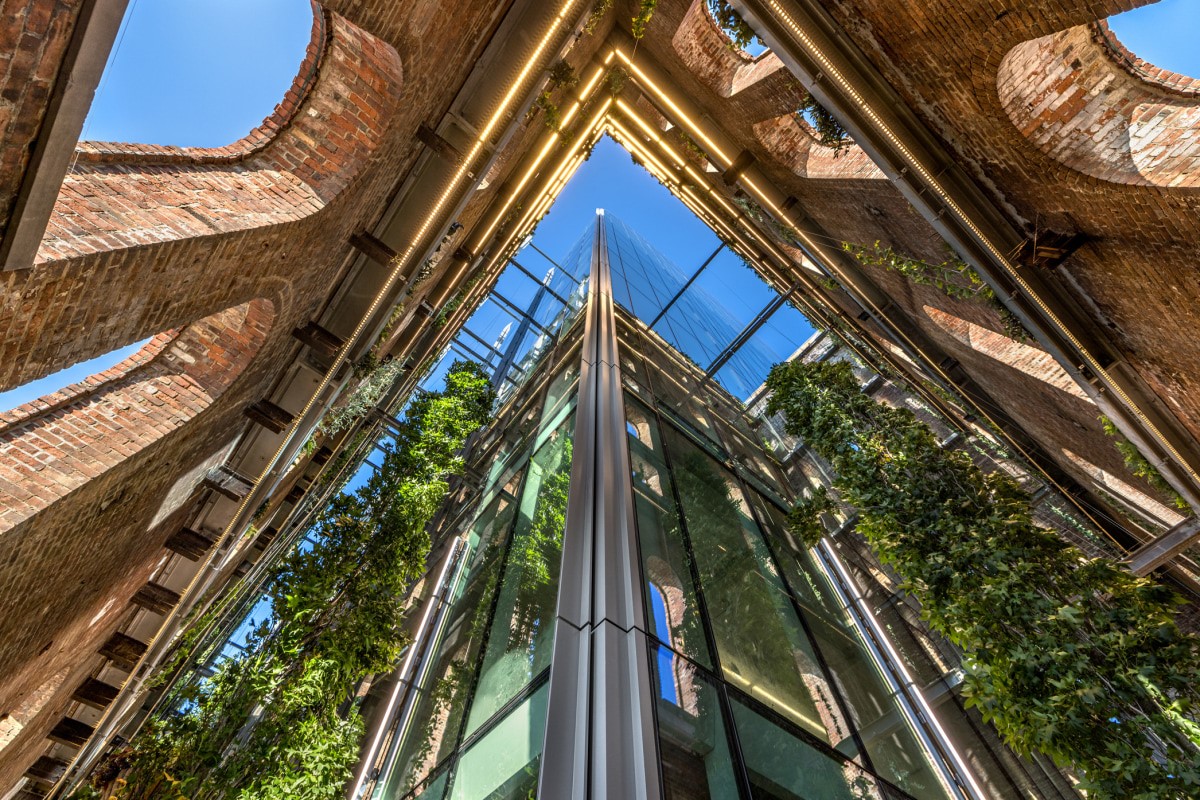
Chakrabarti first drew up the masterplan for the area while a partner at Shop (and in collaboration with Field Operations) then later went on to design the building under his own firm. He recalls an early phone call with Two Trees CEO Jed Walentas: “My immediate reaction, and I kind of sketched it as we were talking on the phone, was to say ‘let’s not try to build a normative building; let’s slip a new building into the old building with this 10 to 12-foot gap,” he says. (Two Trees had to build a crane inside the hollowed-out courtyard to build the new structure inside the landmarked facade.)
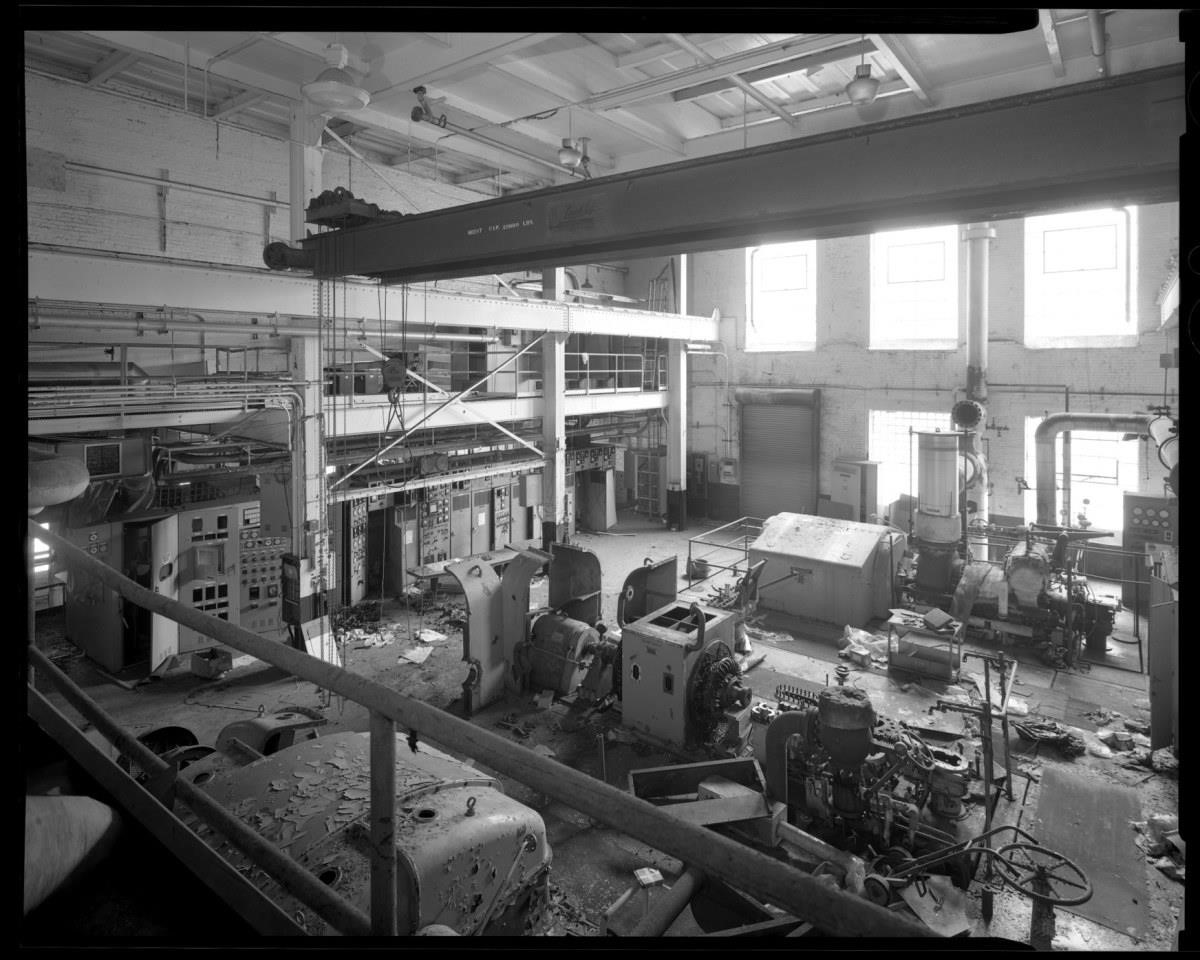
The strategy was necessary. Because the sugar factory was never segmented into actual floors, none of the brick facade windows lined up with the building’s projected floor plates. By preserving the facade and slotting a separate building inside it, the architects essentially built a contemporary building with a glass curtain wall and standard floor plates. And by setting it back by 12 feet, they let natural light stream into the space all the while framing views of the East River and Brooklyn into what Chakrabarti calls “vignettes,” or the arched windows.
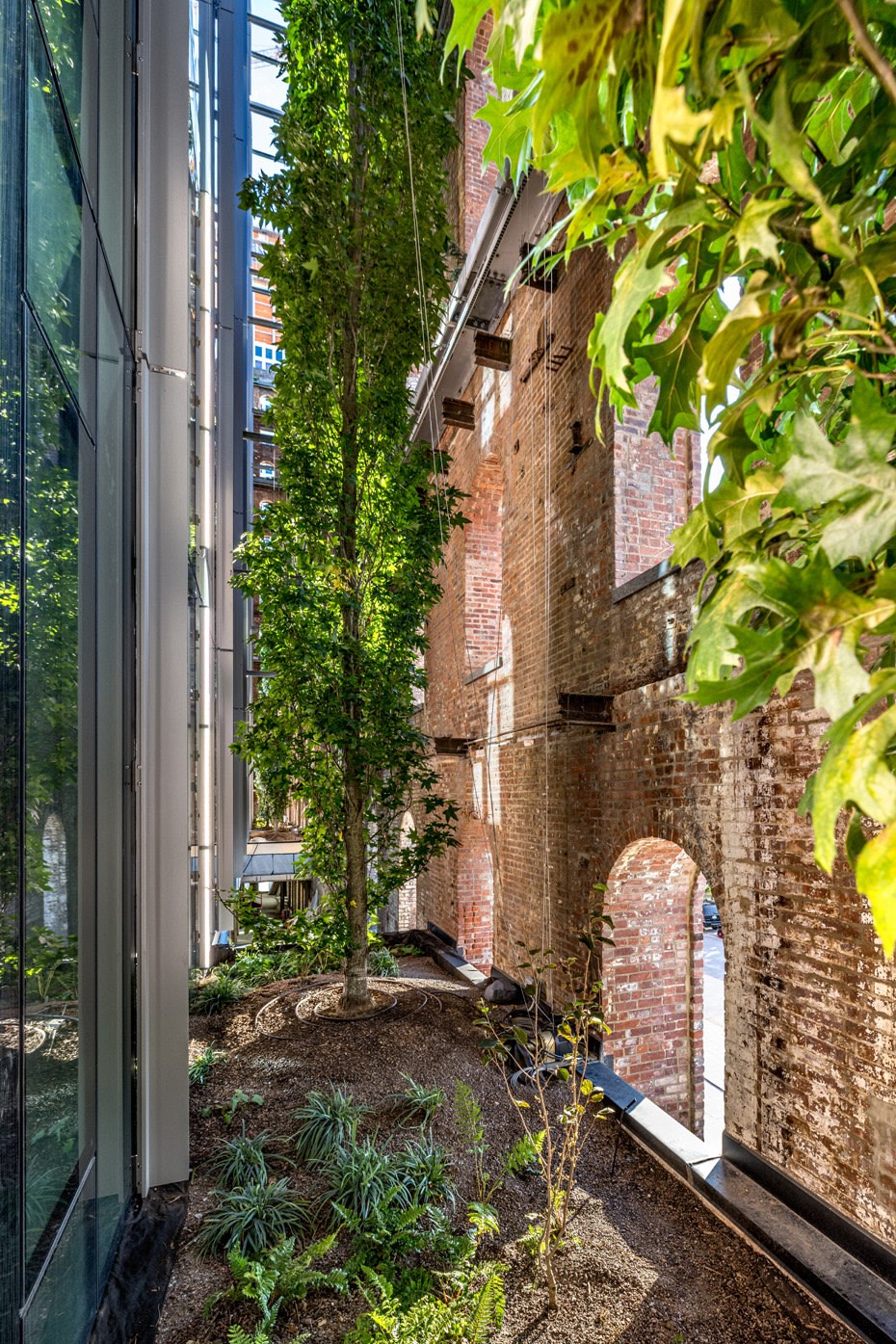
Today, the building counts 460,000 square feet of office space spread across 15 floors. The majority of those floors are surrounded by the brick facade, which Field Operations has turned into a vertical garden with planters at every level, plus seventeen 30-foot American sweet gum and native pin oak trees rising in that inner perimeter.
Visitors entering the building can look up through the pill-shaped chimney. “Also, I know kids are going to love yelling up there and hearing their echo,” Chakrabarti says with a laugh. But the Refinery holds one more surprise on its crown: a striking, column-free event space under a glass barrel vault.
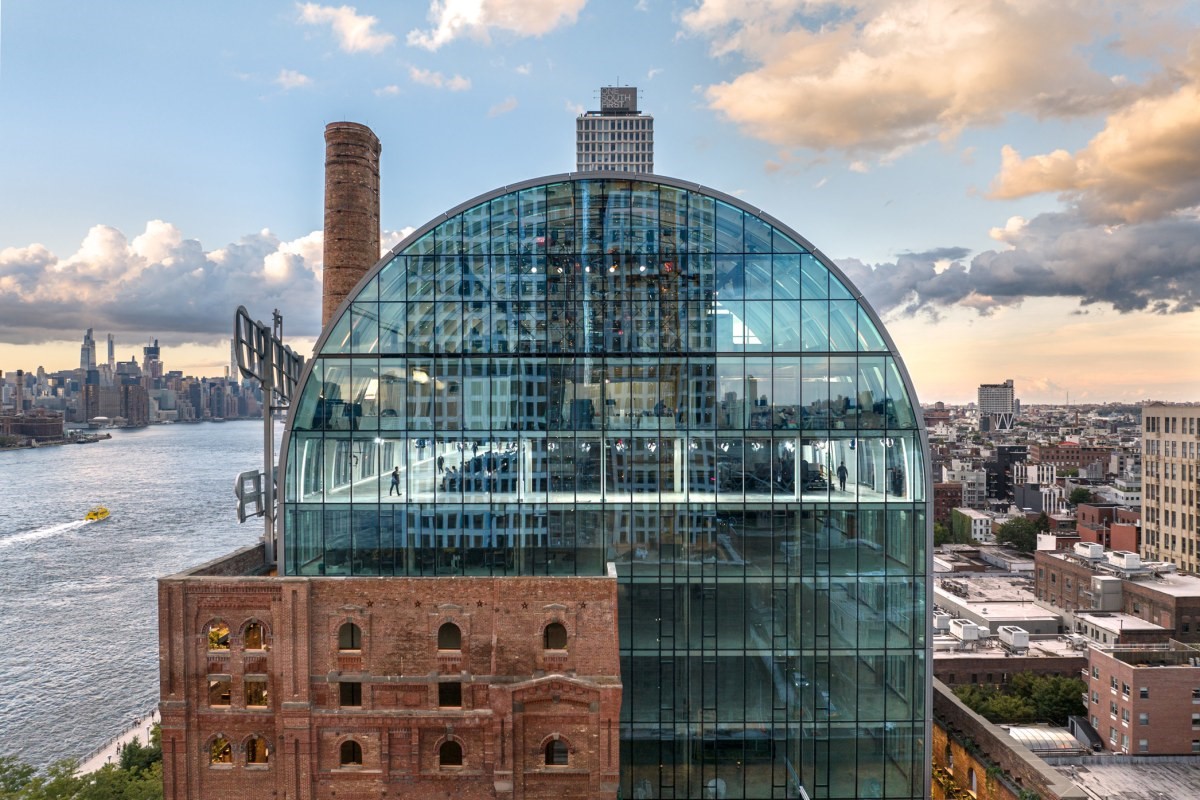
Chakrabarti says the team cycled through about 50 models of various shapes but they kept gravitating towards the barrel vault form as an homage to the American Round Arch-style windows that make up the brick facade. That connection may not be immediately apparent when you look at the building from across the East River, but the glass vault gives the building an undeniable, distinctive presence, especially at night when it is aglow from within, like a modern-day treasure chest.
Technically, such extravaganza on top of a landmarked building isn’t allowed as new additions are meant to be invisible. But the architects wanted something that celebrates the building’s history and creates a dialogue between past and present. “I go to Berlin, I go to Vienna, and there is a fearlessness about putting the old next to the new, there’s a sense that things can cohabitate,” Chakrabarti tells me. “Here in the States, we’re a little bit more insecure about our history.” Ultimately, he says, his team had a “very philosophical conversation” with the New York Landmarks Preservation Commission and made the case for the barrel vault as a necessary architectural element that would bring a historical landmark into the 21st century.
As we know by now, they succeeded.
(3)

